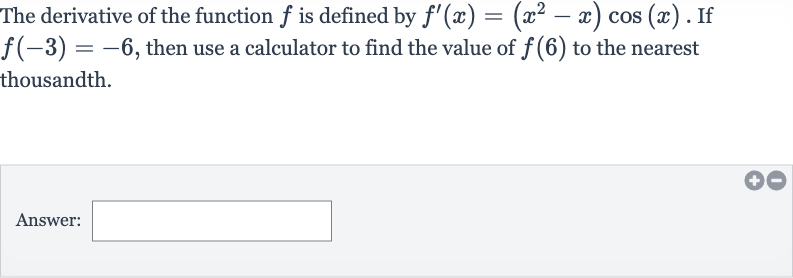Full solution
Q. The derivative of the function is defined by . If , then use a calculator to find the value of to the nearest thousandth.Answer:
- Integrate : To find , we need to integrate the derivative to get the original function . The integral of will give us up to a constant .
- Use calculator for integration: We integrate using integration by parts or a calculator with symbolic integration capabilities. However, since the problem asks us to use a calculator, we will assume the use of a calculator for this step.
- Find constant : After integrating, we get , where is the constant of integration. We need to find the value of using the initial condition .
- Solve for C: We plug into the integrated function to solve for C: .
- Calculate definite integral: We use the calculator to find the definite integral from to of . This will give us the change in from to .
- Apply Fundamental Theorem of Calculus: We add the result of the definite integral to the initial value to find . This is because the Fundamental Theorem of Calculus tells us that the definite integral from to of is equal to .
- Find definite integral : Using the calculator, we find the definite integral from to of . Let's denote this value as .
- Calculate : We calculate .
- Round to nearest thousandth: We round the result to the nearest thousandth as the problem asks for the answer in that precision.

